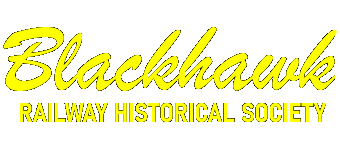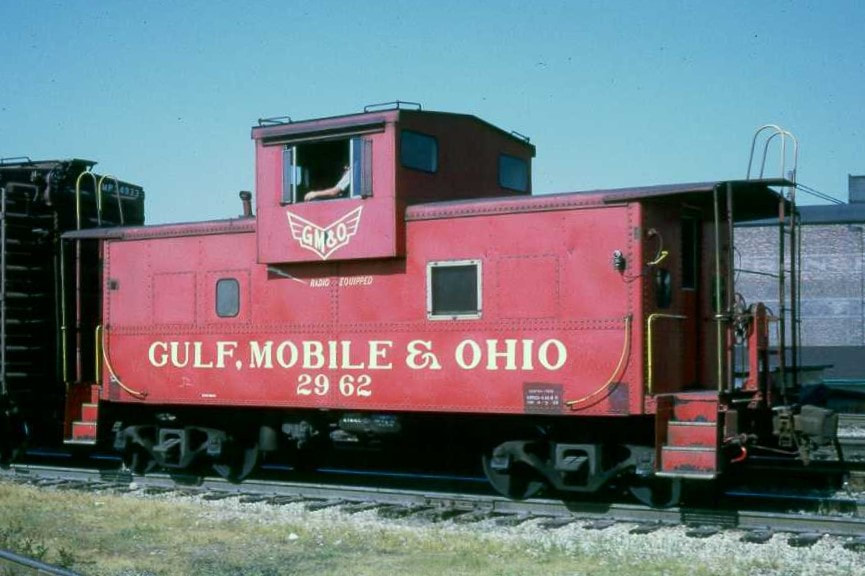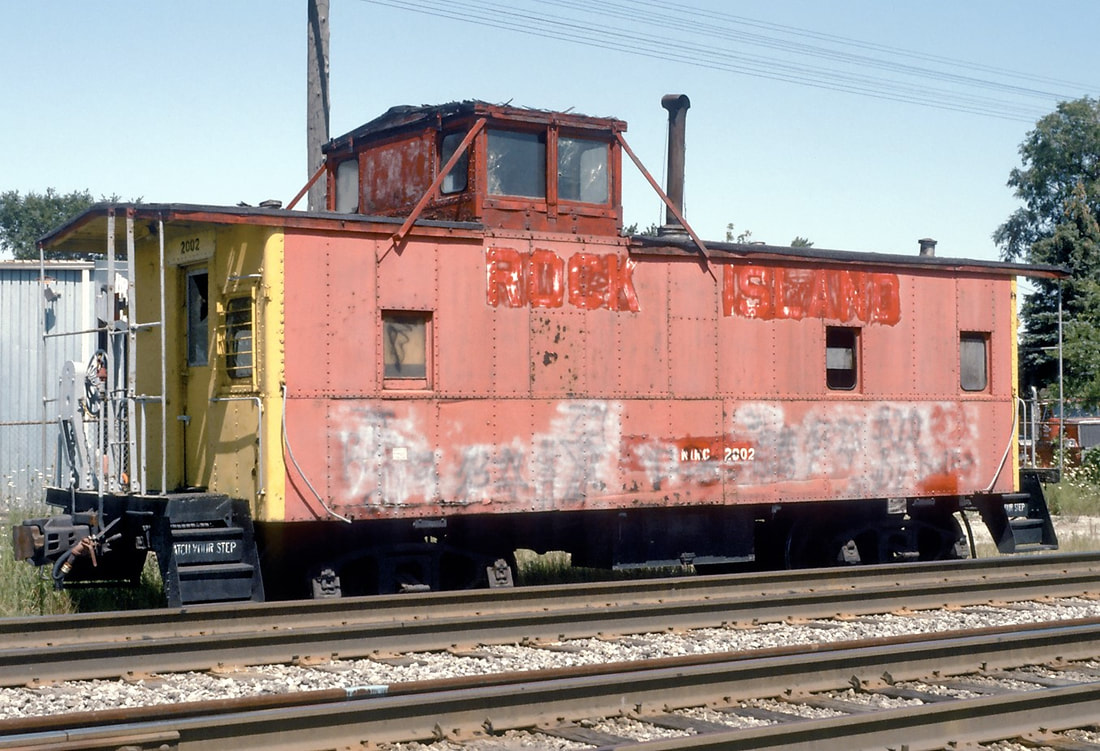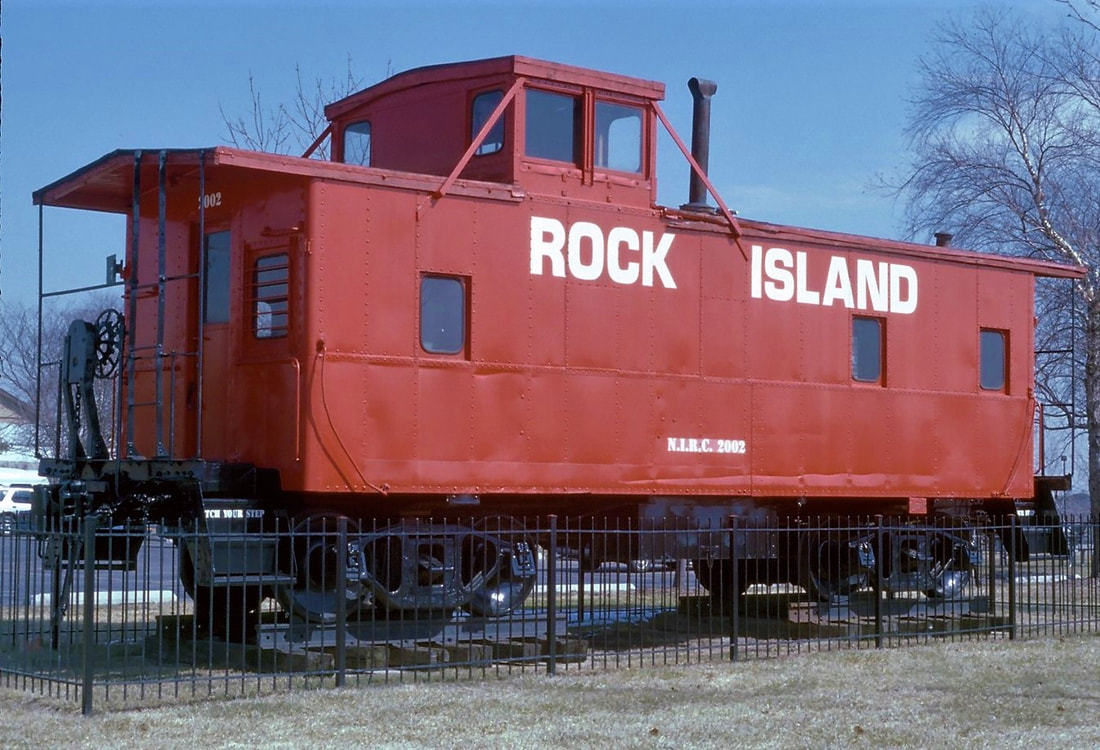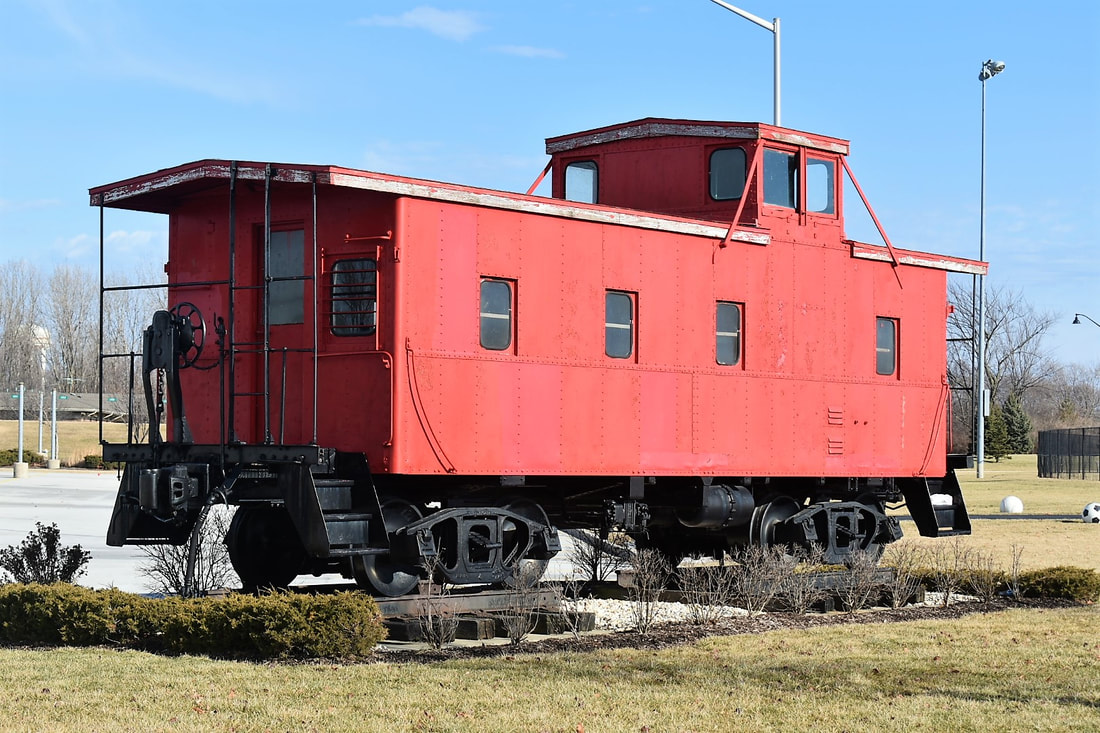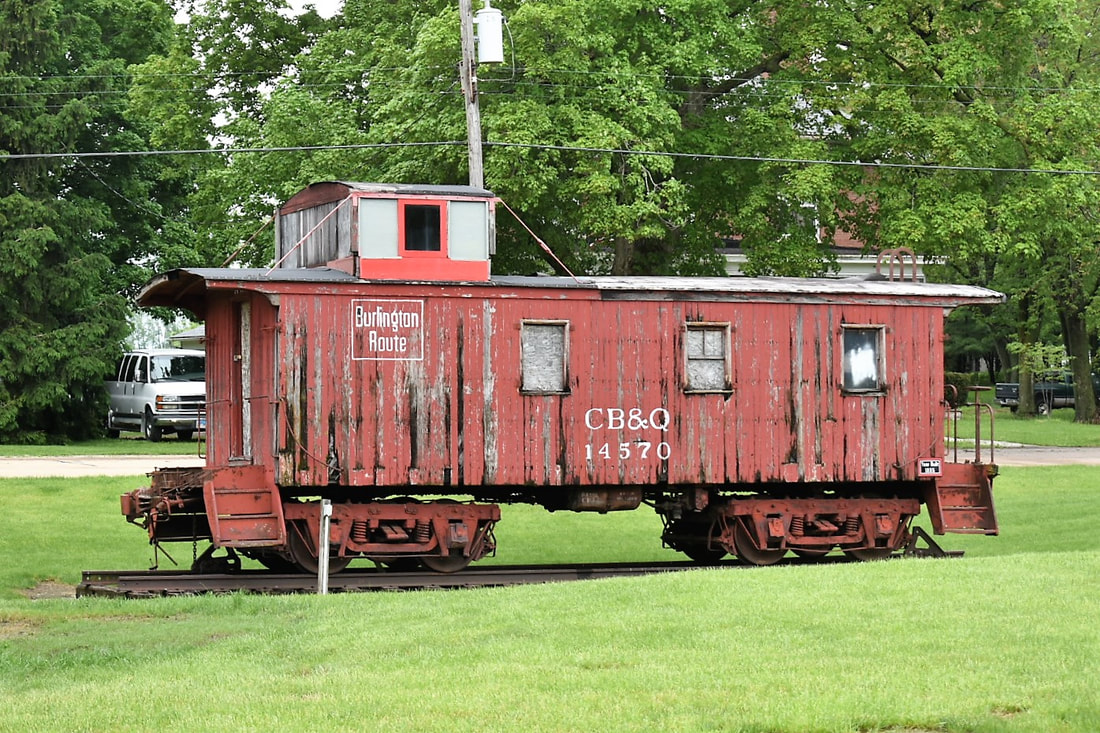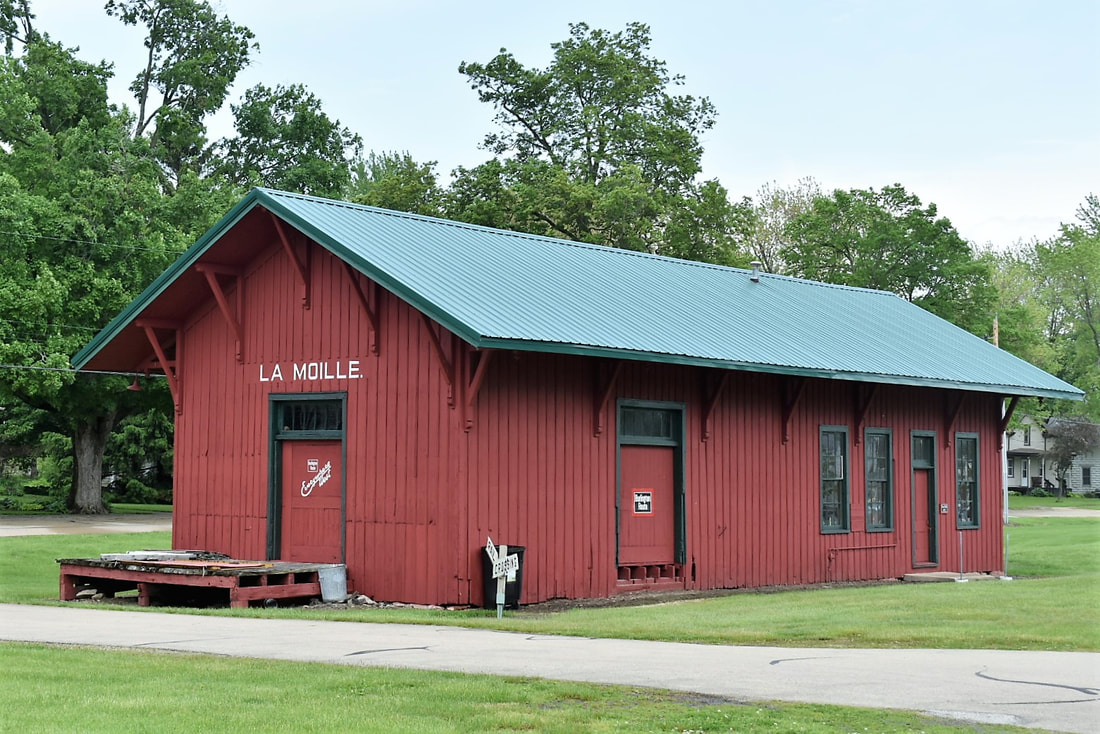PRESERVING EQUIPMENTGulf, Mobile & Ohio caboose #2962A Blackhawk member owns and is restoring this caboose. It currently is on private property.
It originally was a Western Maryland "Northeastern-style" caboose. It was purchased by the GM&O and sent to International Car Company and refitted with wide-vision cupola. It did receive Illinois Central Gulf orange paint and was retired when cabooses were phased out. |
Rock Island caboose #17869In 1930, the Rock Island built their first steel cabooses, numbered 17850 to 17899. The cabooses were rebuilt in 1954-55 with the most notable change being the removal of some of the side windows. The only offset-cupola steel cabooses on the Rock Island, they were often seen in service on through-freights until newer cabooses bumped them to local assignments in the 1970s.
After the Rock Island shutdown in 1980, caboose #17869 was purchased by the Regional Transportation Authority (RTA) for use on work trains and assigned the reporting marks and number “NIRC 2002”. The NIRC (Northeastern Illinois Regional Commuter Rail Corporation) was a government-created company that operated the commuter rail service for the RTA on the former Rock Island and Milwaukee Road lines out of Chicago after both railroads went into bankruptcy. NIRC retired caboose #17869 and in 1995, it was acquired by the Tinley Park-Park District and placed on display at the Jaycee Grove picnic area at 16801 South 80th Avenue in Tinley Park, Illinois. It was painted bright red with incorrectly-styled lettering and the NIRC reporting marks. While in Jaycee Grove, an Eagle Scout consulted with Blackhawk members on his community project to restore the caboose, including a full restoration of the interior. When the Park District was required to build a retention pond at the original display site, the caboose was placed in storage until a suitable location could be found and on Aug. 24, 2009, it was moved to a new location between the Tinley Park Public Library and Freedom Park, just south of the 80th Ave. Metra Station. |
A Lil' R&R for an EJ&E Caboose and Boxcar
|
For about three decades, Enrico's Italian Dining at the intersection of U.S. Routes 30 and 45 in Frankfort, Illinois had a EJ&E wooden caboose and 40' steel boxcar attached to their restaurant. Enrico's Facebook page shows both cars on a siding in Frankfort in 1978.
When the intersection of U.S. 30 & 45 was widened and a chain drug store was planned for the corner where the restaurant was, Enrico's closed that location and moved. However, the caboose and boxcar were saved. Years later, they were purchased and moved to Palo, Iowa, west of Cedar Rapids and near the former Milwaukee Road yard in Atkins, Iowa, and they have been turned into a rural getaway. The new owners reached out to Blackhawk for information on the caboose and boxcar. The 1912 EJ&E caboose had its cupola removed when it was downgraded to transfer service and is likely the last one remaining. |
Norfolk and Western Business Car 300
Blackhawk has made a donation to the ongoing preservaton of N&W 300 by the Norfolk and Western Business Car 300 Preservation Society.
The Mystery of CB&Q #14570
Every so often, we hear about a former Burlington wood waycar in north central Illinois that at one time apparently belonged to, or someone in, our group. We are working on unwrapping this mystery and finding out what it's current status is, but we can definitely tell you this -- as much as we'd like to claim it, we don't own it.
Chicago, Burlington & Quincy 14570 was a typical design wood waycar (that is what the Burlington called their "cabooses") built in the 1880s. After being retired from active service, 14570, like other out-of-work cabooses, ended up in private hands. Much of the exact history is unknown to us, but the caboose eventually ended up in the town of La Moille, Illinois, located on one of the Q's many now-abandoned branchlines that used to blanket rural Illinois. It sits in front of the town's 19th-century CB&Q depot, miles from any active railroad lines.
Thanks to some detective work by Bill Molony, and thanks to some contacts made in the Facebook group RAILROAD HISTORY BUFFS OF ILLINOIS, we now have more information on Blackhawk’s past relationship and the current
ownership with this CB&Q NE-1 waycar.
Don Crimmin said “I was a member of Blackhawk when it was chartered in Aurora back in the late 60's/early 70's. David Briggs, who now lives in California, was the president and envisioned a museum in Aurora, IL, that would revolve around CB&Q equipment. To that end, 14570 was purchased for display and former Q/BN suburban power 7301 was also acquired. 14570 was placed on an unused siding at the Exide battery factory in Aurora, just north of the old Montgomery sheep yards. 7301 ran a in a couple of fantrips on the Rock Island in the early 70's and was based at the Rock's coach yard in Chicago. The proposed museum would have ideally owned "Silver Dome" also. "
"Dave got the Big Rock, IL, depot moved to what is now Pioneer Park in Aurora with idea the depot could house archives and be surrounded by the equipment collection. When plans did not come together, the equipment was disposed of. 7301 ended up in Kansas where it still resides, I believe. I have sent an email to Dave to see if he has any records or recollections of the disposal of the waycar by Blackhawk.”
Davis Shroomberg added “I believe this was purchased by the gentleman who also purchased the depot in LaMoille. He had had a collection of railroad memorabilia inside the depot, but when he passed some time prior to 2010, his family auctioned it off, I want to say circa 2008 or 2009. I met his widow at a garage sale in 2010, which is how I came by the story. There was a YouTube video released recently by Ray Tutaj Jr. with a gentleman who knew all kinds of history about the depot, including a derailment that took place along Route 34 there in LaMoille.”
We thank Don and Davis for the additional information and look forward to seeing where this story goes.
Chicago, Burlington & Quincy 14570 was a typical design wood waycar (that is what the Burlington called their "cabooses") built in the 1880s. After being retired from active service, 14570, like other out-of-work cabooses, ended up in private hands. Much of the exact history is unknown to us, but the caboose eventually ended up in the town of La Moille, Illinois, located on one of the Q's many now-abandoned branchlines that used to blanket rural Illinois. It sits in front of the town's 19th-century CB&Q depot, miles from any active railroad lines.
Thanks to some detective work by Bill Molony, and thanks to some contacts made in the Facebook group RAILROAD HISTORY BUFFS OF ILLINOIS, we now have more information on Blackhawk’s past relationship and the current
ownership with this CB&Q NE-1 waycar.
Don Crimmin said “I was a member of Blackhawk when it was chartered in Aurora back in the late 60's/early 70's. David Briggs, who now lives in California, was the president and envisioned a museum in Aurora, IL, that would revolve around CB&Q equipment. To that end, 14570 was purchased for display and former Q/BN suburban power 7301 was also acquired. 14570 was placed on an unused siding at the Exide battery factory in Aurora, just north of the old Montgomery sheep yards. 7301 ran a in a couple of fantrips on the Rock Island in the early 70's and was based at the Rock's coach yard in Chicago. The proposed museum would have ideally owned "Silver Dome" also. "
"Dave got the Big Rock, IL, depot moved to what is now Pioneer Park in Aurora with idea the depot could house archives and be surrounded by the equipment collection. When plans did not come together, the equipment was disposed of. 7301 ended up in Kansas where it still resides, I believe. I have sent an email to Dave to see if he has any records or recollections of the disposal of the waycar by Blackhawk.”
Davis Shroomberg added “I believe this was purchased by the gentleman who also purchased the depot in LaMoille. He had had a collection of railroad memorabilia inside the depot, but when he passed some time prior to 2010, his family auctioned it off, I want to say circa 2008 or 2009. I met his widow at a garage sale in 2010, which is how I came by the story. There was a YouTube video released recently by Ray Tutaj Jr. with a gentleman who knew all kinds of history about the depot, including a derailment that took place along Route 34 there in LaMoille.”
We thank Don and Davis for the additional information and look forward to seeing where this story goes.
